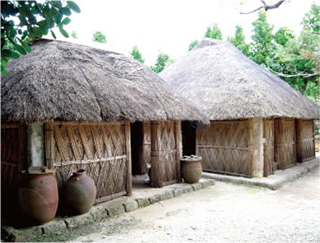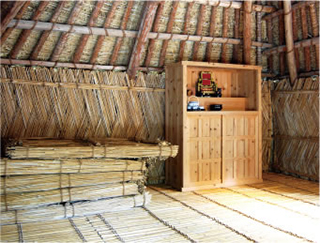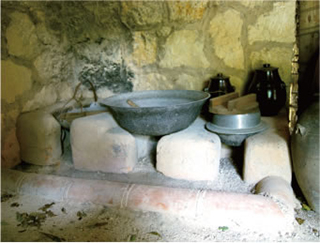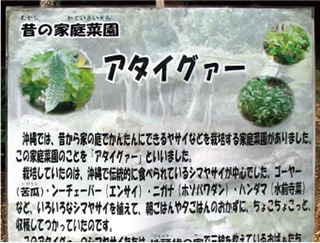Traditional Okinawa Village and Omoro Arboretum
- HOME
- Facilities
- Native Okinawan Village and Omoro Botanical Garden
- Native Village exploring map
- Private house in Motobu
Private house in Motobu
A glimpse of one of the oldest shanty-style private houses in Okinawa.
Although this building was built in the early Showa era, it’s a building that encompasses the oldest architectural style of the Ryukyu Kingdom. There are two buildings, i.e. the main building and kitchen (Tunguwah) with pillars made of coral limestone in all four corners, low floors (wooden floor at the time) and thatched roofs with log framing. Both buildings have walls made of two layers of Chinibu (bamboo) filled with thatch, and the walls surrounding the kitchen are made of natural coral limestone and soil is used for masonry. Also, there is a rainwater pipe installed where the roofs of the two buildings come in contact which is inclined to drain rainwater to the back of the building.
For hundreds of years, houses in Okinawa had kitchen gardens where vegetables were casually grown. This kitchen garden was called “Ataigwah”. Traditional crops of Okinawa called Shimayasai were mainly grown. Various Shimayasai were grown including Goya (bitter gourd), Unchehbah (Water spinach), Ixeris dentate (Crepidiastrum lanceolatum) and Handama (Okinawa spinach) and harvested little by little to eat. These Shimayasai in the kitchen garden were grown very carefully by the old ladies that taught Sanshin at the deputy landlord’s residence.
Location within the park
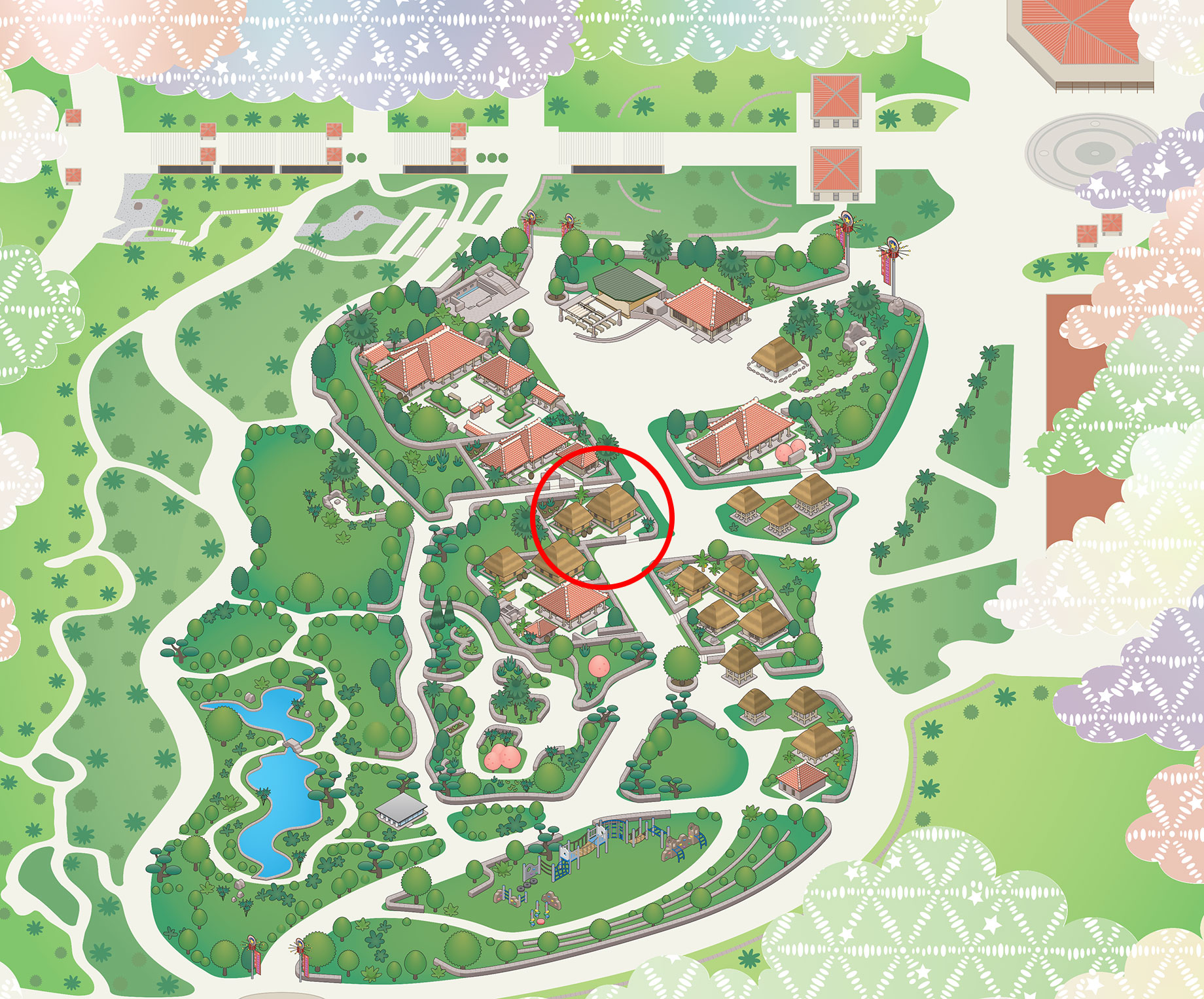
Plants grown in the park
Detailed map

